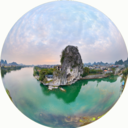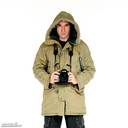0 Likes





Hungary (Hungarian: Magyarország, in English officially the Republic of Hungary (Magyar Köztársaság), literally Magyar (Hungarian) Republic), is a landlocked country in the Carpathian Basin of Central Europe, bordered by Austria, Slovakia, Ukraine, Romania, Serbia, Croatia, and Slovenia. Its capital is Budapest. Hungary is a member of OECD, NATO, EU, V4 and is a Schengen state. The official language is Hungarian, which is part of the Finno-Ugric family, thus one of the four official languages of the European Union that are not of Indo-European origin.Following a Celtic (after c. 450 BC) and a Roman (9 AD – c. 430) period, the foundation of Hungary was laid in the late 9th century by the Hungarian ruler Árpád, whose great-grandson Stephen I of Hungary was crowned with a crown sent from Rome by the pope in 1000. After being recognized as a kingdom, Hungary remained a monarchy for 946 years, and at various points was regarded as one of the cultural centers of the Western world. A significant power until the end of World War I, Hungary lost over 70% of its territory, along with 3.3 million people of Hungarian ethnicity, under the Treaty of Trianon, the terms of which have been considered excessively harsh by many in Hungary. Hungary lost eight of its ten biggest cities as well. The kingdom was succeeded by a Communist era (1947–1989) during which Hungary gained widespread international attention regarding the Revolution of 1956 and the seminal move of opening its border with Austria in 1989, thus accelerating the collapse of the Eastern Bloc. The present form of government is a parliamentary republic (since 1989). Today, Hungary is a high-income economy, and a regional leader regarding certain markers.In the past decade, Hungary was listed as one of the 15 most popular tourist destinations in the world. The country is home to the largest thermal water cave system and the second largest thermal lake in the world (Lake Hévíz), the largest lake in Central Europe (Lake Balaton), and the largest natural grasslands in Europe (Hortobágy).Slightly more than one half of Hungary's landscape consists of flat to rolling plains of the Pannonian Basin: the most important plain regions include the Little Hungarian Plain in the west, and the Great Hungarian Plain in the southeast. The highest elevation above sea level on the latter is only 183 metres.Transdanubia is a primarily hilly region with a terrain varied by low mountains. These include the very eastern stretch of the Alps, Alpokalja, in the west of the country, the Transdanubian Medium Mountains, in the central region of Transdanubia, and the Mecsek Mountains and Villány Mountains in the south. The highest point of the area is the Írott-kő in the Alps, at 882 metres.The highest mountains of the country are located in the Carpathians: these lie in the northern parts, in a wide band along the Slovakian border (highest point: the Kékes at 1,014 m/3,327 ft).Hungary is divided in two by its main waterway, the Danube (Duna); other large rivers include the Tisza and Dráva, while Transdanubia contains Lake Balaton, a major body of water. The largest thermal lake in the world, Lake Hévíz (Hévíz Spa), is located in Hungary. The second largest lake in the Pannonian Basin is the artificial Lake Tisza (Tisza-tó).Phytogeographically, Hungary belongs to the Central European province of the Circumboreal Region within the Boreal Kingdom. According to the WWF, the territory of Hungary belongs to the ecoregion of Pannonian mixed forests.Hungary has a Continental climate, with hot summers with low overall humidity levels but frequent rainshowers and frigid to cold snowy winters. Average annual temperature is 9.7 °C (49.5 °F). Temperature extremes are about 42 °C (107.6 °F) in the summer and −29 °C (−20.2 °F) in the winter. Average temperature in the summer is 27 °C (80.6 °F) to 35 °C (95 °F) and in the winter it is 0 °C (32 °F) to −15 °C (5.0 °F). The average yearly rainfall is approximately 600 mm (23.6 in). A small, southern region of the country near Pécs enjoys a reputation for a Mediterranean climate, but in reality it is only slightly warmer than the rest of the country and still receives snow during the winter. Tibor IllesITB Panorama Photo